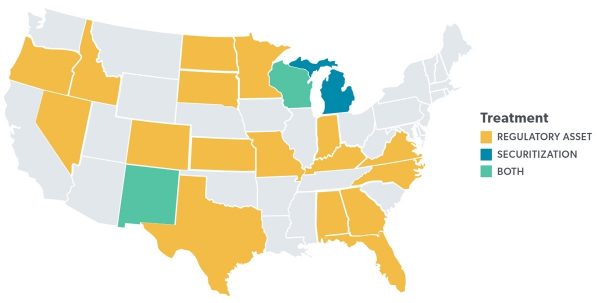Brattle Economists Present Regulatory Tools to Aid Utilities in Early Retirements of Coal Plants
Across the US, coal plants are facing heightened competition from natural gas and renewable resources amid increased national and local decarbonization goals.
In a new study released today, “Managing Coal Plant Retirements for an Orderly Transition to Decarbonization,” economists at The Brattle Group outline the many pressures facing coal plants, identify the challenges utilities face in managing retirements, and present several regulatory tools that can help facilitate an orderly transition process.
The majority of US coal plants are under economic stress. Two-thirds of the country’s coal fleet already had negative operating margins in 2017, and the wholesale power prices in many regions have decreased further in recent years. About 30% of US coal capacity has been retired over the last 10 years, and an additional 55 GW is announced to retire by 2030, reducing the fleet to about half its prior maximum size. However, to reach President Biden’s 2035 carbon-free electricity goal, the remaining 160 GW of coal capacity will have to either retire or eliminate its carbon emissions in the next two decades.
Even in the absence of further federal policy, sustained low natural gas prices and continuing reductions in the cost of building renewable generation and storage are making early plant retirements an appealing proposition for both utility companies and their customers.
However, recovery of undepreciated past investments at regulated coal plants – which amount to more than $100 billion – poses a major barrier to economical early retirements of utility-owned plants. In order to comply with various environmental laws enacted in the last decade, over 75 GW of regulated coal plants installed capital-intensive environmental control technologies – such as selective catalytic reduction (SCR) equipment – during this time. If retired early, these plants will likely be subject to major cost recovery risks, especially in the context of stakeholders seeking less than full cost recovery through “used and useful,” prudence, risk-sharing, and fairness arguments.
Utilities have turned to several different sunk cost recovery mechanisms and approaches, including regulatory asset creation, accelerated depreciation, levelized forward recovery, and securitization. These tools can help ease the transition by spreading the benefits of the retirement savings over a broader base.
“Over the past decade, utilities have recovered more than $5 billion of undepreciated costs by relying on existing and new tools that help to recover prudently-incurred undepreciated investments while reducing future costs to ratepayers,“ commented Dr. Metin Celebi, a Brattle Principal and study coauthor.
“A successful transition of the industry from coal to cleaner fuels requires providing electric utilities with the incentives to find strategies to lower ratepayer costs and reduce emissions without penalizing them for prudent past investment decisions,” noted Dr. Long Lam, a Brattle Associate and study coauthor. “There are many misconceptions about why prudently developed and well-managed plants may become uneconomical, and it is essential to clarify these in making the supply and cost recovery adjustments.”
Regulatory Treatment of Undepreciated Past Investment Costs at Retiring Coal Plants

Figure 10: Regulatory Treatment of Undepreciated Past Investment Costs at Retiring Coal Plants
The study, “Managing Coal Plant Retirements for an Orderly Transition to Decarbonization,” is authored by Brattle Principals Dr. Metin Celebi, Frank Graves, and Robert Mudge, and Associate Dr. Long Lam.
View Report